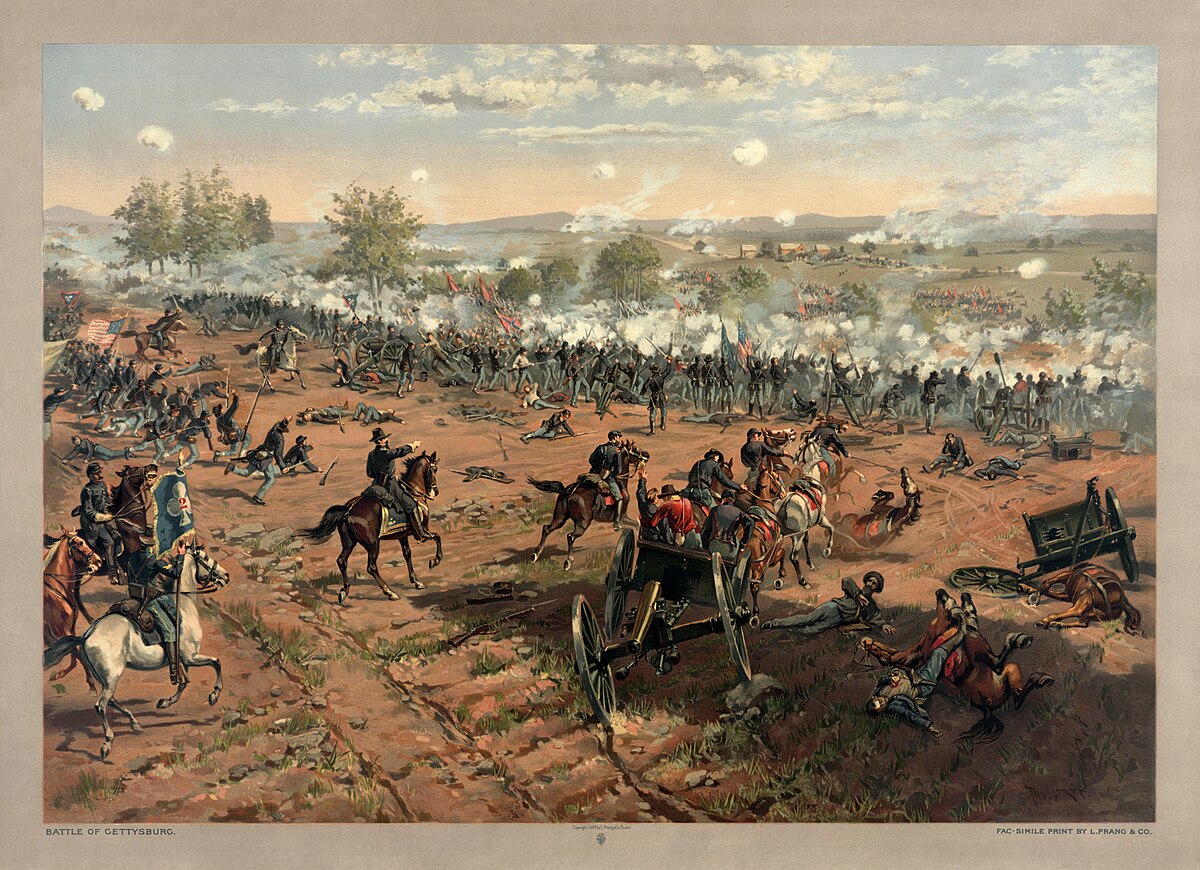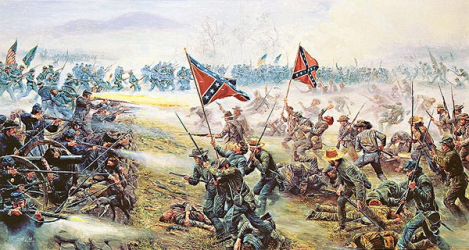Pickett's Charge was an infantry assault on July 3, 1863, during the Battle of Gettysburg. It was ordered by Confederate General Robert E. Lee as part of his plan to break through Union lines and achieve a decisive victory in the North.
Pickett's Charge was a devastating Confederate assault which resulted in heavy casualties and ultimately contributed to the Union victory. It involved a frontal attack across open fields by approximately 12,500 Confederate soldiers against the well-defended Union center on Cemetery Ridge. The charge is named after Major General George Pickett, one of the Confederate commanders who led the assault.


 www.battlefields.org
www.battlefields.org


 warfarehistorynetwork.com
warfarehistorynetwork.com

 en.wikipedia.org
en.wikipedia.org


 en.wikipedia.org
en.wikipedia.org
Pickett's Charge was a devastating Confederate assault which resulted in heavy casualties and ultimately contributed to the Union victory. It involved a frontal attack across open fields by approximately 12,500 Confederate soldiers against the well-defended Union center on Cemetery Ridge. The charge is named after Major General George Pickett, one of the Confederate commanders who led the assault.

Pickett's Charge
On July 3, 1863, the Union and Confederate Armies were locked in a death struggle near the crossroads town of Gettysburg, Pennsylvania. What began as a...

Pickett's Charge: "We Gained Nothing But Glory"
By Eric Niderost July 3, 1863, dawned clear and bright, the warm sun promising even greater heat to come. By noon, temperatures were already in the low 90s, a typically hot and humid summer day in southern Pennsylvania. The action on the ground would soon get even hotter. Five days earlier...

Pickett's Charge - Wikipedia



